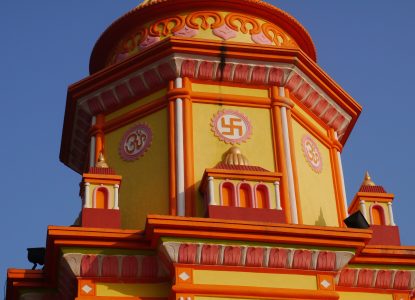By Dr. James Christie, Ambassador-at-Large, Canadian Multifaith Federation
– – –
A Flicker of Light in Disruption
March 11th will mark two years since the World Health Organization officially declared COVID-19 a pandemic. The date is indelible. I gathered with a group of friends to learn more about the benefits of that peerless herb, tea, from a world expert in the tea trade. He was free to join us because his scheduled trip to Wuhan had just been cancelled. Remember Wuhan?
The great disruption had begun.
Just over a month later, celebrated author, Arundhati Roy, published her article comparing the pandemic to a portal. We could, she said, pass through that portal dragging with us the detritus of human history; or we might pass through the pandemic portal committed to the establishment of a post-pandemic world, inclusive and collaborative, in ways hitherto unimagined.
Well, better luck next time.
Roy’s was a felicitous vision for an already ill-favoured century. The established pattern of rapacious transnational commerce has prevailed. Regressive nationalism, populism, and relentless individualism are on the rise. And racism is, if possible, more ubiquitous than before COVID-19.
And yet… even amidst the pall of the present global crises, there are flickers of light.
The narrative captured in the following joint Hindu-Jewish statement is one such. It is concise, clear, and creative. And expressly collaborative. I commend it unreservedly.

Banning the Swastika: Safeguarding Holiness and Fighting Hate
Pandit Roopnauth Sharma and Richard Marceau
For more than one billion people, the swastika represents hope. To the rest of the world, the Nazi Hakenkreuz, a contortion of the swastika, is an incitement to repeating the genocide of the Holocaust.
Last week, on Parliament Hill, in the very heart of our nation’s capital, Canadians were stunned to see hate symbols such as Nazi emblems and Confederate flags being flown.
In reaction, NDP MP Peter Julian tabled Bill C-229, An Act to amend the Criminal Code (banning symbols of hate).
We are living in a troubling time of rising racism, targeting both our Jewish and Hindu communities. That is why we, Canadian representatives of the two oldest world religions, support the spirit of this legislative initiative.
Hate has no place in Canada, period.
However, in contemplating banning the swastika, great care is required.
The swastika is indisputably a holy Hindu symbol. As the 2008 Declaration of the Second Hindu-Jewish Leadership Summit describes, the “Svastika is an ancient and greatly auspicious symbol of the Hindu tradition. It is inscribed on Hindu temples, ritual altars, entrances, and even account books.”
In fact, in Sanskrit, the word swastika means “that which brings good luck and well-being”: su means “good” and asti means “is.”
The swastika is also holy for Buddhists, Jains and Zoroastrians.
This ancient and rich heritage must be respected and honored, while at the same time addressing the Nazi misappropriation that twists and weaponized this symbol into an historic act of racism and hate.
For Jews, the Nazi swastika is forever linked with the German National Socialist project to literally exterminate and erase the Jewish people. It is a symbol synonymous with antisemitism, a hatred that occupies a unique status in history with the culmination of the Holocaust.
Tragically, to this day, more than 75 years after Hitler’s demise, the Nazi symbol remains a rallying emblem for anti-Semites around the world.
Deployed, it is a weapon of hate, not a noxious form of free expression. It is spray painted on synagogues, drawn on walls or desks at schools, and painted on community centers to intimidate, harass, and sow fear. It is etched into stone, desecrating Jewish graves. It is used in Holocaust inversion to demonize Jews and Israel as a cosmic evil force in the world, to be destroyed. It is a call to violence when publicly celebrated. The Nazi thesis was not only an argument for racial supremacy, it was a stated project – an obsession – of the total extermination of the Jewish people.
The crux of this matter is how to combat this hate and consecrate free speech, without conceding an ancient holy symbol to violence and misappropriation.
As Parliament considers Mr. Julian’s bill, it must make sure that the context of the use of the Nazi swastika is carefully considered. We cannot allow the Hindu symbol of goodness to be erased as we take steps together to stamp out hate.
The bill – which we support — should be amended to ensure that proper use of the swastika for religious purposes by Hindus, Buddhists, Jains and Zoroastrians is protected, celebrated, and remains completely legal in Canada.
It should be amended to clarify that the evidence demonstrates the Nazi Hakenkreuz is a weapon of hate, not a matter of free expression.
And, it should mandate broad public education and discussion, defining clear distinctions between the holy swastika for Canadian Hindus, the Nazi Hakenkreuz as a weapon of hate, and the unequivocal affirmation of religious freedoms core to Canadian national life.
Whatever the political events of the day, it is absolutely possible, indeed essential, to combat Jew hatred while ensuring the rights of Hindu, Buddhist, Jain and Zoroastrian Canadians, and respect their benevolent and sacred symbols. Let us together take the steps to celebrate our religious freedoms, and our unity in confronting the Nazis that persist on our streets.
Pandit Roopnauth Sharma is the President of Hindu Federation and Richard Marceau is the Vice-President, External Affairs & General Counsel for the Centre for Israel and Jewish Affairs.
Conclusion
The Honourable Peter Julien, MP, was very much open to conversation about his Bill. He has responded throughout with careful listening and courteous consideration. Nuancing the text of his Bill C229, appears not only possible, but probable. The process is a case study demonstrating the raison d’être of the IF20 and our anti-racism initiative.
The Statement is also a modest step in fulfilling the three foundational hopes outlined by the late Doctor Hans Küng in Spero Contra Spem. Those hopes resonate today and will echo long into the future. They are:
– I hope for unity among the churches.
– I hope for peace among religions.
– I hope for community among the nations.
– – –
Dr. James Christie is the inaugural Ambassador-at-Large for the Canadian Multifaith Federation and part of the G20 Interfaith Forum Board of Directors. For 15 years, Christie served at the University of Winnipeg as Dean of Theology, Dean of the Global College, and Director of the Ridd Institute for Religion and Global Policy.


